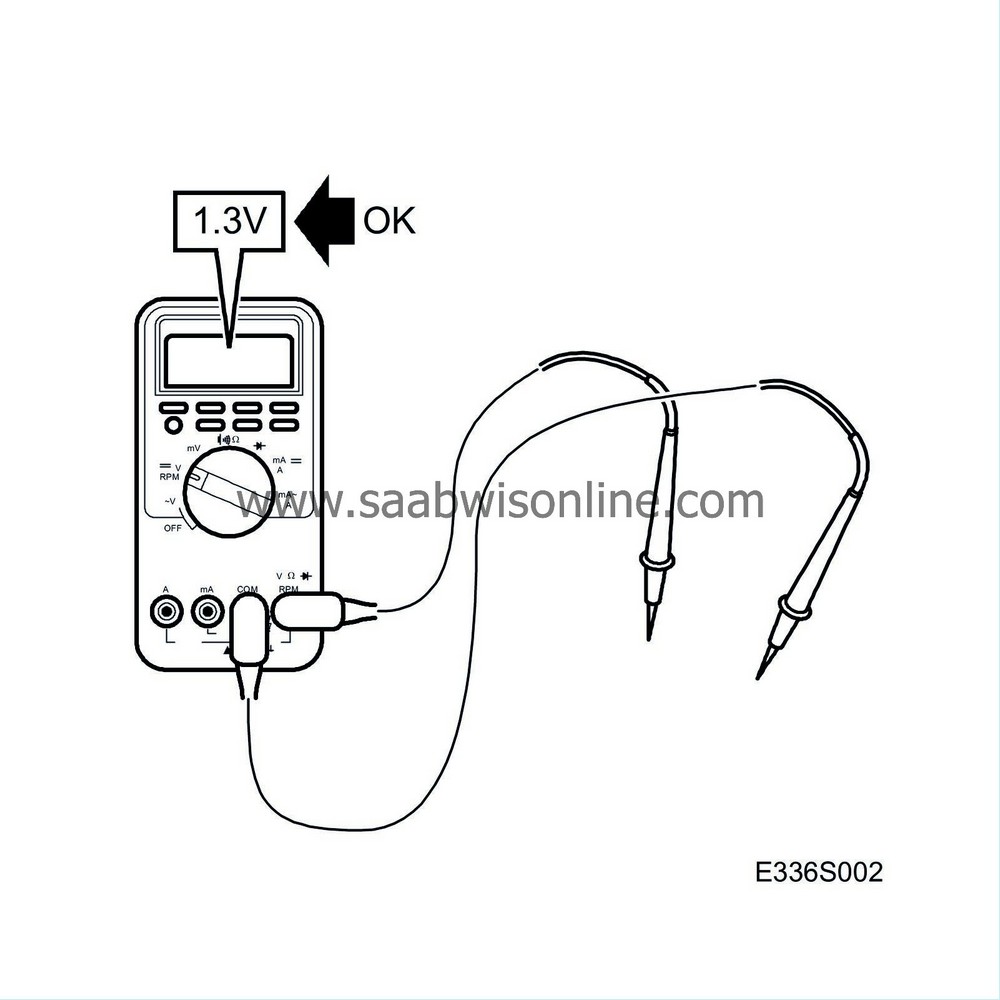Test values and control module connections for Popular
|
|
Test values and control module connections for Popular
|
Values and instructions for testing the voltage levels of the control modules are found under the relevant headed sections.
|
•
|
Observe the conditions set for testing and use common sense when assessing the results.
|
|
•
|
The test values presented apply when the ignition is in the ON position unless otherwise stated.
|
|
•
|
First make sure that the control module is receiving power and that it is grounded.
|
|
•
|
Then check all the sensor inputs and signals from other systems.
|
|
•
|
Finally, check the control module outputs. Remember that the test values do not indicate whether the module is working.
|
|
•
|
If a test value is incorrect, consult the wiring diagram to trace which leads, connectors and components should be checked more thoroughly.
|
|
•
|
The specified test values refer to those obtained with calibrated Fluke 88/97.
|
|
•
|
Test values in % (+) and ms (+) show the pulse ratio and pulse duration of the signal. A test instrument capable of giving pulse ratio and pulse duration readings should be used. The (+) symbol indicates a positive trigger pulse, TRIG+.
|

|
Main unit connections (26-pin)
|

> = greater than; < = less than; ~ = AC voltage (LP: LOGIC PROBE P = select pulse; p = visible pulses)
Pin No.
|
Cable colour
|
Component/
function
|
In/Out
|
Test conditions
|
Across
|
Test value
|
See
|
1
|
|
No connection
|
|
|
|
|
|
2
|
RD/BU
|
Power supply +15:
|
In
|
Ignition ON
|
2-4
|
B+
|

|
3
|
|
No connection
|
|
|
|
|
|
4
|
BK
|
Ground:
|
In
|
|
4 - good grounding point.
|
<0.5V
|

|
5
|
|
No connection
|
|
|
|
|
|
6
|
YE
|
Telephone mute
|
In
|
No telephone call
|
6-4
|
4-6 V
|
Telephone system

|
|
|
|
|
Telephone call
|
6-4
|
<2 V
|
|
7
|
GN
|
Trigger voltage:
|
Out
|
Main unit on
|
7-4
|
|

|
8
|
RD
|
Power supply +30:
|
In
|
|
8-4
|
B+
|

|
9
|
BU/WH
|
Speaker, right rear (-)
|
Out
|
Music playing
|
9-4
|
0-2 V AC. Dependent on volume control. The test reading should vary with the volume of the music.
|

|
10
|
GY
|
Speaker, right front (-)
|
Out
|
Music playing
|
10-4
|
0-2 V AC. Dependent on volume control. The test reading should vary with the volume of the music.
|

|
11
|
BN
|
Speaker, left front (-)
|
Out
|
Music playing
|
11-4
|
0-2 V AC. Dependent on volume control. The test reading should vary with the volume of the music.
|

|
12
|
GN
|
Speaker, left rear (-)
|
Out
|
Music playing
|
12-4
|
0-2 V AC. Dependent on volume control. The test reading should vary with the volume of the music.
|

|
13
|
RD/WH
|
Speaker, right rear (+)
|
Out
|
Music playing
|
13-4
|
0-2 V AC. Dependent on volume control. The test reading should vary with the volume of the music.
|

|
14
|
BN/RD
|
Speaker, right front (+)
|
Out
|
Music playing
|
14-4
|
0-2 V AC. Dependent on volume control. The test reading should vary with the volume of the music.
|

|
15
|
BN/WH
|
Speaker, left front (+)
|
Out
|
Music playing
|
15-4
|
0-2 V AC. Dependent on volume control. The test reading should vary with the volume of the music.
|

|
16
|
BN/WH
|
Speaker, left rear (+)
|
Out
|
Music playing
|
16-4
|
0-2 V AC. Dependent on volume control. The test reading should vary with the volume of the music.
|

|
17
|
WH
|
I-BUS (-)
|
In/Out
|
Ignition ON
|
17-4
|
2-3 V
|

|
18
|
GN
|
I-BUS (+)
|
In/Out
|
Ignition ON
|
18-4
|
2-3 V
|

|
19
|
|
No connection
|
|
|
|
|
|
20
|
BK
|
CD changer RH line input (-)
|
In
|
Music playing
|
20-21
|
0-2 V AC. The test reading should vary with the volume of the music.
|

|
21
|
BN
|
CD changer RH line input (+)
|
In
|
Music playing
|
21-20
|
0-2 V AC. The test reading should vary with the volume of the music.
|

|
22
|
BK
|
Phone line input, ground
|
In
|
-
|
-
|
-
|
Telephone system

|
23
|
GY/WH
|
Phone line input, signal
|
In
|
|
|
|
Telephone system

|
24
|
|
No connection
|
|
|
|
|
|
25
|
RD/WH
|
CD changer LH line input (-)
|
In
|
Music playing
|
25-26
|
0-2 V AC. The test reading should vary with the volume of the music.
|

|
26
|
BU/WH
|
CD changer RH line input (+)
|
In
|
Music playing
|
26-25
|
0-2 V AC. The test reading should vary with the volume of the music.
|

|






